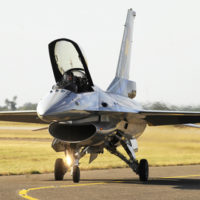Canopy Open during Takeoff Forces Emergency Landing; Ends in Crash

Of the many things that can go wrong during takeoff in a small plane, having the canopy (cockpit enclosure) open or even separate from the plane is one that can divert the pilot’s attention or cause loss of control, forcing an emergency landing that may or may not end well for the pilot.
On the afternoon of Tuesday, October 27th, a sport pilot was flying his Zodiac 601XL kit plane as part of a personal cross-country flight. He had just taken off from Hemet-Ryan Airport in Hemet, east of Los Angeles in Riverside County, when the canopy opened and began to flap up and down. The pilot aborted the takeoff and initiated a landing on the runway, but he “lost perspective of the runway” and landed hard, causing the plane’s nose landing gear to collapse and the nose of the plane to impact the runway. The plane’s left wing and fuselage were damaged in the crash, and the pilot suffered serious injuries, according to preliminary information reported by the National Transportation Safety Board (NTSB).
Incidents of a plane’s canopy coming open during takeoff are not infrequent. The Hemet crash is in many ways reminiscent of a crash which occurred last year in Ocala, Florida. There, the pilot owner of a Tango 2 kit plane had just taken off and was only about 20 feet above the runway when the canopy popped open and started flapping up and down. The pilot struggled to control the porpoising plane and made a forced emergency landing, impacting the ground in a grassy area about 1,500 feet south of the runway. The plane was consumed by fire, and the pilot suffered burns but survived the crash. The pilot could not state for certain whether the canopy latch was unsecured or malfunctioned, and fire damage to the craft has prevented a definitive conclusion, according to the probable cause determination made by the NTSB.
That kit’s manufacturer has reported at least three other incidents of the left canopy opening on takeoff.
Canopies opening during takeoff have been experienced in military jet fighters as well. Last June, the canopy of a T-38 – a twin-engine, two-seat, high-altitude supersonic jet trainer manufactured by Northrop Grumman – opened after takeoff from Vance Air Force Base in Enid, Oklahoma. The same thing happened last December to another T-38 taking off from Langley Air Force Base in Virginia. In both instances the pilots were able to land safely and without injury.
Some canopies are intentionally kept open during takeoff and landing, like if you are flying a vintage WWII fighter. But when the canopy opens unintentionally, the results can be disastrous, as we have noted. Even if not causing difficulties in controlling the plane, a problem like this can take the pilot’s attention away from flying the craft while trying to secure the latch. The best approach is to land as soon as possible and fix the problem.
Small plane owners should always consult pre-flight checklists provided by the airplane manufacturer prior to take off. Owners of kit planes may have to develop their own customized checklist. Following these procedures is important not only for safe operation in flight but also to help determine whether a crash involved pilot error or was due to an airplane malfunction, such as a malfunctioning canopy latch.


 Close Menu
Close Menu